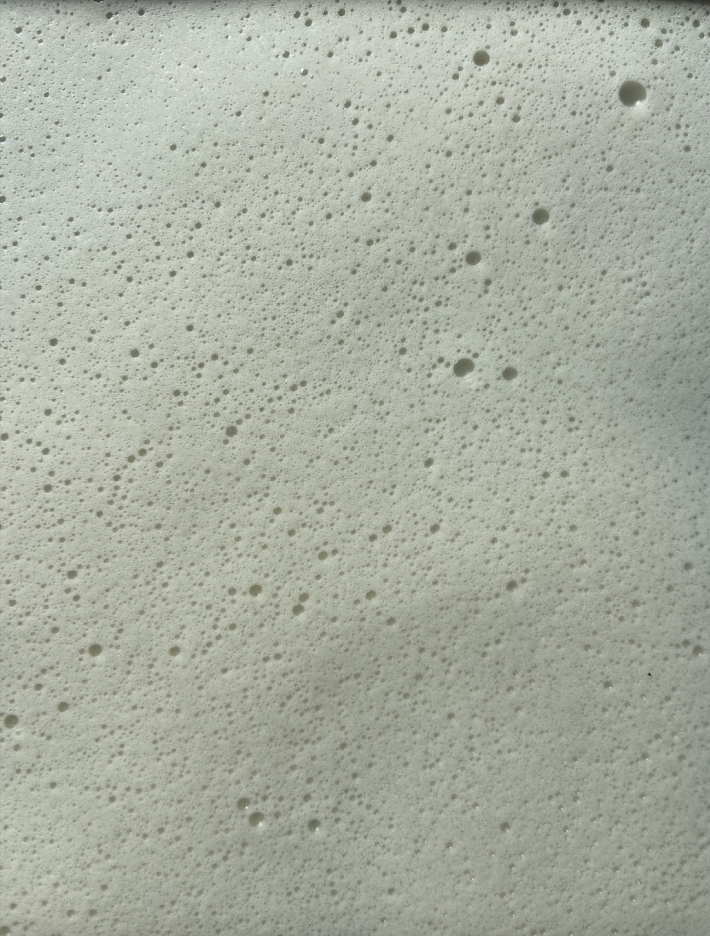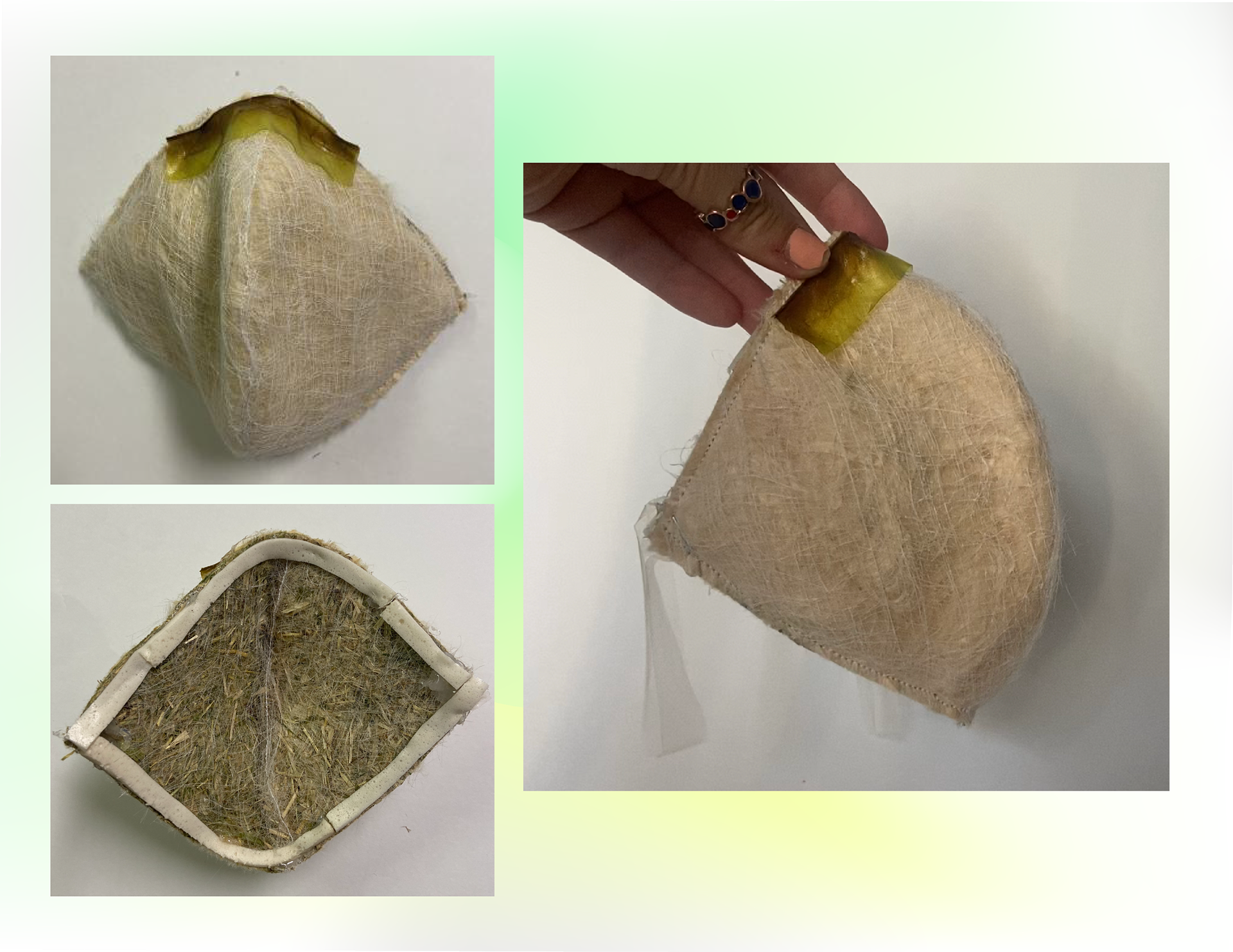Role: Lead Designer
Duration: 6 months, January- July 2021
Skills: Graphic Design, Bio-Design, Research & Development, Hands-on Prototyping, Product Design
"I feel the most creative when I am able to perform a variety of tasks, work with an interdisciplinary team, and participate in all stages of the design process."
PROJECT OVERVIEW:
Worked with an interdisciplinary group of three other UC Davis honors students to develop a product/solution to an environmental issue for the Biodesign Challenge in June 2021. In light of both the COVID-19 pandemic and the ongoing plastic pollution crisis that our world faces, we created a bio-based alternative to the disposable N-95 mask. We worked for two quarters to research bio materials and related products, brainstorm, test, and build a prototype for our project. I worked as the Lead Designer on this project and was tasked with creating the brand identity for our product, creating an online presence, putting together our pitch decks and supplementary materials, and for developing bioplastics at home. We were mentored three esteemed professors, Elizabeth Marley, David Furlough, and Marc Facciotti, throughout the process. Due to the COVID-19 pandemic, most of the labs on campus were shut down, forcing us to get creative with our prototyping process and do most of our experiments at home until we were able to obtain clearance to work in the lab setting.
We were selected to represent UC Davis at the Biodesign Summit in June 2021. In years past, we would have flown to New York to present our project to teams from around the globe. Unfortunately, due to the pandemic, we had to attend the summit online, but got to network with international teams nonetheless.
We also entered our design into the BARDA Mask Innovation Challenge, a contest funded by the Biden Administration to develop the future’s mask. We pitched our design in front of a panel of judges in April 2021 and competed against experts in the field, including Obama’s Secretary of Energy and the creators of one of Time’s Top 100 Inventions of the Year. Being among the youngest people to enter the competition, we were honored to be selected as finalists, making it to the top 40 teams out of 1500 applicants.
BRAND IDENTITY:
Effective branding was crucial for this product in order to convince consumers to select GREEN-95 over traditional N-95 masks. For this product, we wanted to create a brand identity that drew from graphic design trends at the time, as well as felt more interesting and fresh than medical devices currently on the market, in order to appeal to our audience. I drew inspiration from 2021 design trends, such as gradients, retro futurism, and neon colors in order to create a brand identity that felt authentic to our product as well as something that will appeal to consumers with its innovative look.
My initial mood board for the project, taking note of current trends
Our final graphic standard that we utilized in our presentations, social media posts, and on our website.
THE PROTOTYPING PROCESS:
As a second-year design major, most of my studies and projects thus far had been using a computer, so this project was really my stepping stone into the world of biodesign and hands-on prototyping. A major component of our design involved using bio-based alternatives to plastic coatings and rubber, which required us to engage in a lot of in-depth research and trial-and-error. While I was not one of the biology or chemistry teammates, I found myself eager to participate in the prototyping process, and ended up spearheading the process of experimenting with bioplastics at home. We utilized both open-source research done by other scientists, as well as created our own recipes, which I experimented with further in an internship with the Design Department the next year.
Below are photos showcasing the results of some of my tests: the photo on the left shows several bioplastic test sheets I created using different amounts of agar agar, as well as other natural additives to produce different results. The photo on the right is a close-up shot of a bio-based foam that I created from gelatin, a byproduct of the meat industry, as well as all-natural dish soap.
The final set of photos show our representational prototype, which includes several of our test materials combined. In our final semester of the project, we pooled our resources and knowledge to create a physical prototype for the mask. While we did not have access to the nano-fiber spinning technology necessary to create our bioplastic textile, and our prototype turned out rather rudimentary, we were extremely proud of our ability to create a representational prototype at home.



GRAPHICS & PITCH DECK:
As the Lead Designer on this project, in addition to creating a brand identity, I was also responsible for creating all of the material that the audience will see in order to make it digestible and match our brand's aesthetic. This required me to have both an in-depth understanding of the science behind our product, but also to be able to dissect it and repackage it into a format that the average person is able to understand. Examples of infographics I created for our pitches included but were not limited to Life Cycle Assessments (LCAs)- comparative and non-comparative, environmental impact summary, and exploded product views.






CONCLUDING THOUGHTS:
While I am only showing a tiny fraction of the work done on this project, please feel free to explore our pitch deck, which we improved from the Biodesign Challenge to pitch at the BARDA Mask Innovation Challenge in April 2021. This project is extremely special to me, as it truly was my stepping stone into the world of sustainable design and biodesign. It proved to me that despite being a designer pursuing a B.A., I can participate in scientific research and development, and bring my own set of unique skills to the table. I also learned throughout working on this project that I feel the most creative when I am able to perform a variety of tasks, work with an interdisciplinary team, and participate in all stages of the design process.
